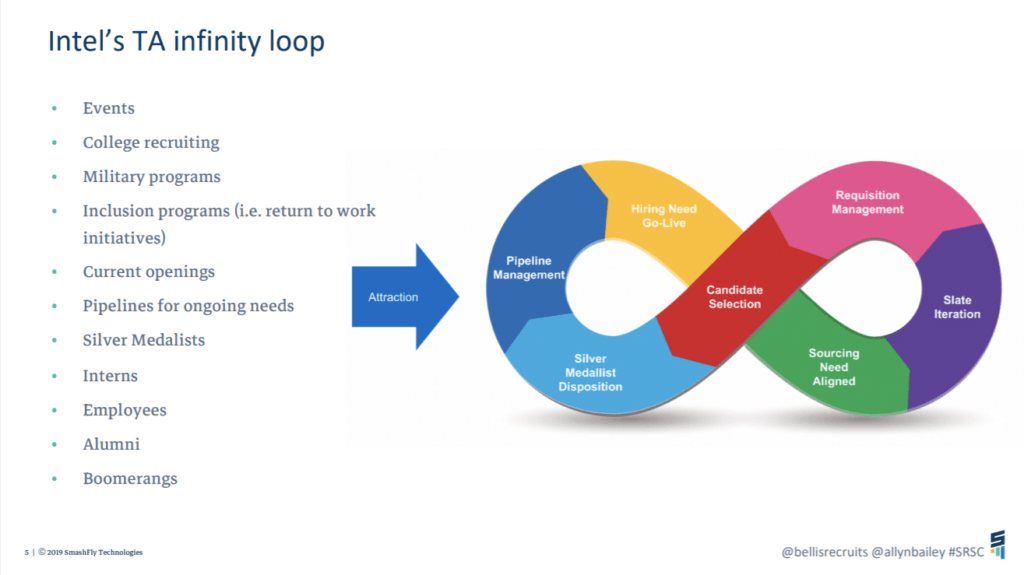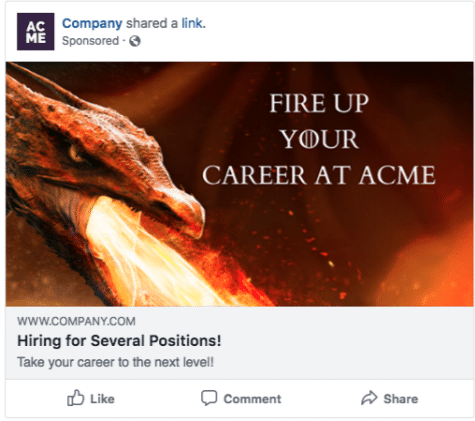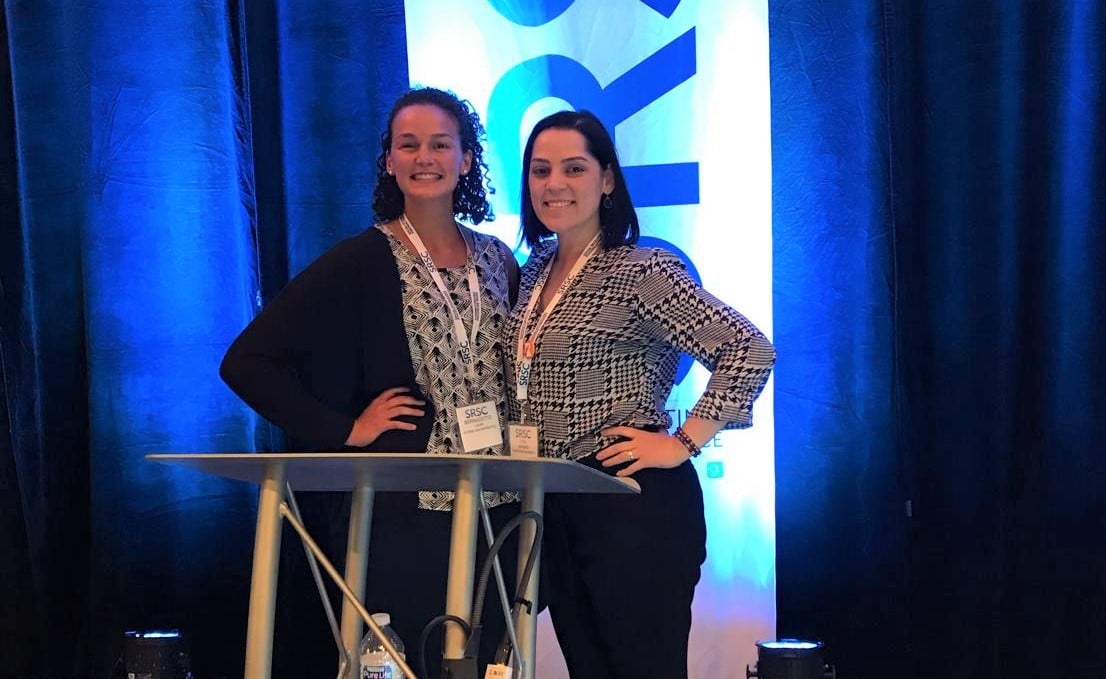Humanizing the Candidate Experience: SRSC 2019 in Review
Last week over 150 recruitment marketing and talent acquisition professionals took Philadelphia by storm with the goal of honing and expanding their social recruiting strategies.
When emcee and Diversity & Inclusion guru Torin Ellis took the stage, he didn’t talk long. He had just one message to give attendees to prepare them for the speakers that were to come:
Be human.
At its core, talent acquisition is about a human being trying to help another human being find the right place to work. And technology, employer branding, and recruitment marketing help make this human experience the best it can be.
3 days, 4 workshops, and 21 sessions later attendees walked away with strategies and insights to humanize their social recruiting efforts.
Start with WHO: Identify your audience
Simple in theory, harder in execution: who do you want to be consuming your recruitment marketing content?
During one of the pre-conference workshops hosted by Rally Recruitment Marketing’s Lori Sylvia, attendees created a candidate persona for a current opening in their organization.
How old are they? What are their career drivers? What is frustrating them in their current role? Where do they spend their time online?
Once you stop talking to the masses, says Lori, you start creating content that actually builds a human connection with high-potential candidates. And you create an experience that makes them feel like this:
In their case study-style presentation, Commerce Bank’s Laura Bookout and HireClix’s Kara Yarnot demonstrated how persona research is helping them better target HiPo personal bankers (bank tellers) to Commerce Bank.
Laura and Kara’s research revealed that HiPos were slightly older and more likely to be married than their counterparts. 37% had started and never finished college, and 21% were working in the food industry before joining Commerce. Deeply understanding the two personas helped Laura create better targeted content for Commerce’s newly launched Instagram page.
Another huge part of understanding your audience, says SmashFly’s Brandy Ellis, is understanding how they’ve interacted with your brand in the past. In introducing the infinity loop, Brandy challenged attendees to alter the transactional approach to recruiting that comes from using the traditional funnel.

The infinity loop encourages us to think in pipelines, not reqs. By maintaining relationships with silver medalists, alumni, and passive candidates, you have a stronger base to pull from once that req presents itself.
Identify a WHY: Create content with a purpose
Once you know who you’re talking to, knowing WHY you are talking to them is your next big step.
exaqueo CEO Susan LaMotte kicked off day two with a candidate experience overhaul. She challenged attendees to consider where candidates are on their journey and to create content with the goal of advancing them to the next step.
For Burlington’s Krista Gathercole, she needed to move potential candidates from stage one (Knowledge of your organization) to stage two (Awareness of the organization as an employer). Most people know the Burlington brand, but few knew its corporate headquarters were located in Burlington, NJ. They didn’t ever consider the off-price retailer as an employer.
Krista’s solution? Geotargeting ads. Her team has launched a billboard campaign along the nearby expressway to catch potential candidates on their long-commute home. They have also used geotargeting to target ads on music streaming platforms to listeners in the area.
Krista’s team has already seen a spike in ‘Burlington careers’ searches on Google, as well as a few mentions of the billboard during interviews.
Our own Lauryn Sargent spoke on finding and creating compelling employee stories — not testimonials. She shared a checklist of the 8 Elements of a Compelling Story to help the audience create better recruitment marketing content. Lauryn proved her point by sharing a personal story from her early days as a Stories Inc. co-founder. The story illustrates a core value in action, plus provides insight into a company’s culture and leadership style. Can you say the same about your employee testimonial?
Time to act: HOW are you going to get there?
Throughout the conference, there were two seemingly warring forces: creating meaningful interactions, and using technology to automate processes. How do you know when to use tech?
“When you can free up recruiters’ time so they can be more human,” says Devin Foster from Phenom People.
CVS Health’s Kerry Noone balances the two well. With over 2 million applications per year, automating processes where possible is essential. But because the 1.8 million rejected candidates are still customers, patients, and members, creating a positive candidate experience is just as essential.
Kerry credits her team’s commitment to nurturing at scale:
Don’t just rely on corporate-driven recruitment marketing content; candidates want to hear from current employees, so creating an employee advocacy program that empowers team members to communicate with their networks expands your company’s reach exponentially.
Allison Kruse, the opening keynote speaker from Kforce, encourages employees to put their own personal spin when sharing company posts. But she always provides suggested captions for those who want to participate, but are more hesitant or don’t have the time to craft their own messaging.
Together, both are effective — Kruse has seen a 496% increase in engagement since introducing the employee advocacy program at Kforce!
Plus some quick tips and tricks…
We’ve only scraped the surface of all the great insights shared at SRSC. Presenters gave countless nuggets and quick tips for attendees to take home and apply to their social recruiting strategy.
Here are just a few of our favorites :
Adriana Kevill, KRT Marketing — Consider thinking outside the box with unusual ad targeting. For example, a lot of software engineers are fans of Game of Thrones. Instead of showing a broad ad to anyone with a title including ‘Software Engineer,’ filter your audience by ‘Fans of Game of Thrones → ‘Title including Software Engineer.’ Then create an extremely targeted ad that will grab attention within this niche group.

Josh Gampel, Recuitics — Segment your paid job advertisements. Josh’s rule of thumb? How much you spend correlates with how bad you need the job filled. Don’t spend a big chunk of your ad dollars on Performers and Over-deliverers that already have the necessary traffic to fill the role. Focus on Challengers (hard to find) and Non-Converters (hard to convert) that have the highest CPA.
George LaRocque, HRWins — Take ownership of your vendor selection process. George’s advice? Don’t overscript your demo conversations. Let the vendor pitch their solution, they just might have an approach you haven’t considered yet.
Craig Fisher, Allegis Global Solutions — A theme throughout the conference, knowing your target audience is key to successful social recruiting. Craig provides a great template to break down the sorts of questions that you might consider when conducting persona research:
Thanks for a great week, SRSC Philadelphia!

